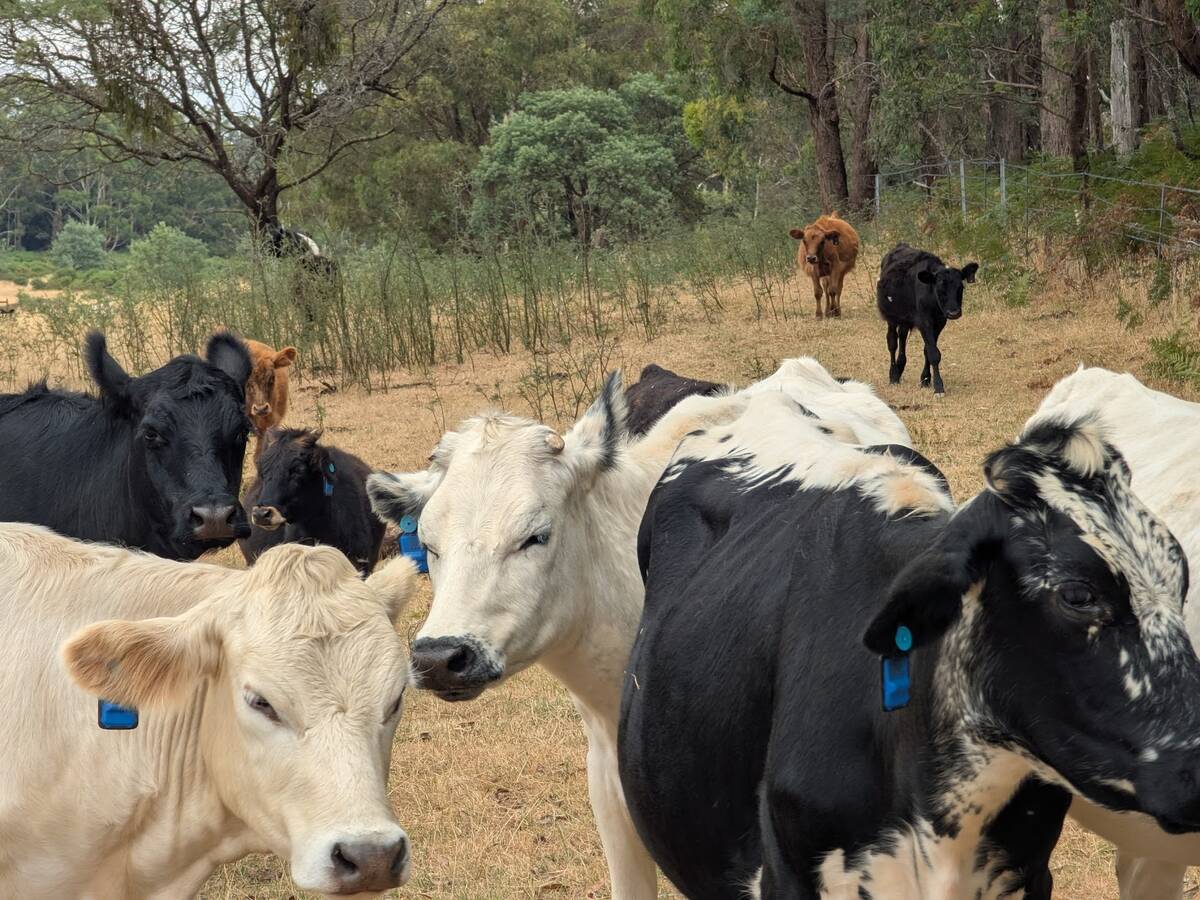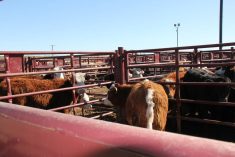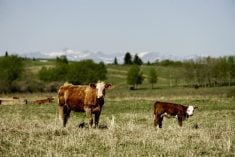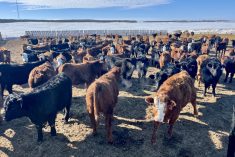In my last article I introduced the “five essentials” for profitable ranching and discussed the first two. The five essentials are:
- Your approach to management should be both integrative and holistic.
- Strive for continuous improvement of the key resources: land, livestock and people.
- Acquire and use a good set of planning and decision-making tools.
- Wage war on cost.
- Emphasize marketing.
We will now continue.
Planning and decision-making tools
Acquire and use a good set of planning and decision-making tools. Today’s computers and cell phones make this job quite easy.
Read Also

Australian company brings ear-tag tech to Canadian pastures
With Smart Paddock, beef farmers and ranchers can track their cattle through GPS technology
We need accurate information to make good decisions. Because of the ease of data collection, I think many ranchers are trying to collect too much data; and the data collection process is costing too much.
You need good grazing information that will help you remember the grazing history of each paddock and calculate “animal days per acre.” There are good programs available that do this nicely and quickly on your phone, tablet or computer. In addition, you need observational information that may include photo points to remind you of past conditions and changes that are occurring. You will also want to make written notes of changes in biodiversity — plants, insects, birds, etc.
For cattle, I like just six pieces of information:
- A chronological list of sales for the year. The list includes sale date, buyer, class of animal, total weight and total money received. The computer calculates the average weight, price per head and price per pound.
- Weaned calf crop percentage (number weaned divided by the number of cows in the inventory at the beginning of calving).
- Pregnancy rate (simply divide the number pregnant by the number of cows checked).
- Total pounds of calves weaned.
- Pounds of yearling gain since last weaning.
- Death losses by class of animal.
I am often asked why I don’t take individual weaning weights. It takes too much time, equipment and effort and gives me no information on which I will base future decisions. A calf is either acceptable or not acceptable. You cull its mother if the calf is unacceptable. At weaning, sort off the few that are truly unacceptable, hold them overnight and put them back with the cows in the morning.
Then sort off the pairs and put a “for sale” sign on the dams of those calves. Too many ranchers spend way too much time on individual cow and calf records. Just mark the exceptions — the ones you want to consider for sale or from which you will never raise a bull. I like to use a notching tool to put notches in ear tags for assisted births, doctored cow or calf, attitude, etc. If two notches, she’s for sale. If one notch, she cannot be the mother of a bull and she is available for de-stocking if drought or other circumstances dictate a need to reduce numbers.
I am also asked why I don’t use “calves weaned per cows exposed.” I want our people managing for the current year against a current year budget. Therefore, we want to focus on getting this year’s calves raised and kept alive and, at the same time, have the cows get pregnant for next year. If you want a very good proxy number for “calves weaned per cows exposed,” multiply this year’s weaned calf crop percentage by last year’s pregnancy rate.
For accounting records, you need a separation of “overheads” and “direct costs.” Overheads consist of land and anything attached to it — such as fences, corrals, buildings and irrigation fixtures — and people and the tools and equipment used to do their jobs, plus the costs attendant to the equipment and tools. Direct costs are those that change with each additional animal that we run. These are mostly feed and vet costs (medicines and vet services) plus some marketing costs.
With these costs clearly defined as “overheads” or “direct costs,” it is much easier to estimate the effect of decisions. With overheads, it’s either you need it or you don’t. With direct costs, the expenditure needs to bring back more income than it costs.
Wage war on cost
We must wage war on cost because of competition. If our neighbours can produce similar products for less cost than we can, they get to stay in business longer. Yes, our neighbours, whom we enjoy having as neighbours, are our competitors. In addition, no one is obligated to eat meat, and, if they do eat meat, it doesn’t have to be beef. So, that puts us in a position where we must produce a product that will sell at a price that is attractive to our customers and profitable to us. Many ranchers find that difficult. Others are quite effectively waging war on cost and can, therefore, find buyers for their livestock that will pay a price that is nicely profitable for them.
We first tackle overhead costs. Reducing overheads is intellectually quite easy but emotionally very difficult.
When we do the hard mental work of reducing overheads, we see we can get along without a certain piece of equipment, or a pickup, or four of our 10 horses; but we are emotionally attached, and it becomes very difficult. The best changes I have seen in ranch profitability have been where the operator was simply able to say, “No, we don’t need that.” Sometimes that means operational changes, and sometimes very little.
Then we deal with direct costs or those that increase every time we add a few animals.
Questions we ask ourselves are: Do we have to feed hay that long? Do we need that feed supplement? Do we really need to give all those shots? Do we need to use that wormer or herbicide or whatever?
I know several people who have cut many of these costs with little performance consequence. Now, I’m not your expert and haven’t seen your ranch or looked at your alternatives. But, to be successful, you will take a careful look at expenditures for feed, vet medicines and vet services. The highly profitable ranchers I know are pretty stingy with those expenses. They want to be sure they are going to get a positive return. I like to get $2 back for every dollar spent. Why? Because we don’t estimate very well in ag production; and what if the cost goes up and our cattle have become dependent?
Emphasize marketing
I have found a little extra time spent on marketing can often have a greater return for time spent than almost anything else you can do. For example, if you were to spend the equivalent of five additional full days on marketing each year and could add $100 per head to 200 animals, that would be an increase of $20,000. Your only cost is your time for the equivalent of five days, or you could say that amount of time returned you $4,000 per day. I won’t say that you can add $100 to every head, but good marketing can add significantly to each animal sold. When I started marketing bred cows, we added significantly more than that to each cow sold. You will also need to make sure your marketing aligns with your production methods and timing. I previously wrote on marketing in the August 2022 issue of this magazine.
These five essentials for profitable ranching really are just that. They have been with me for a long time. I seldom listen to the radio. I prefer to use time driving a vehicle or riding a horse to think about marketing, or how to further reduce overheads, to feed less and graze more, to make my breeding program more effective and to advance range and pasture management faster.
– Burke Teichert is a long-time manager of large ranches. He is also a consultant and speaker. Contact him at [email protected].
















